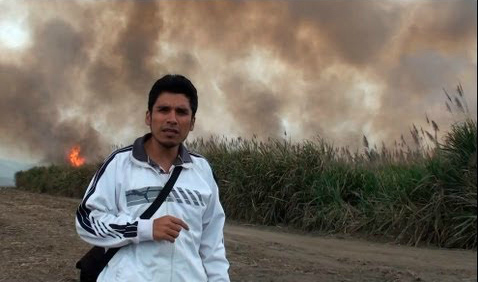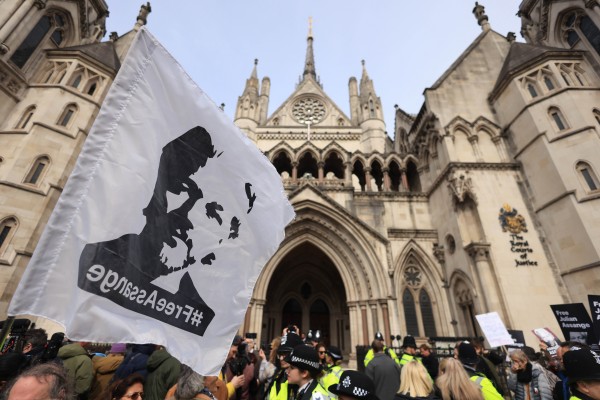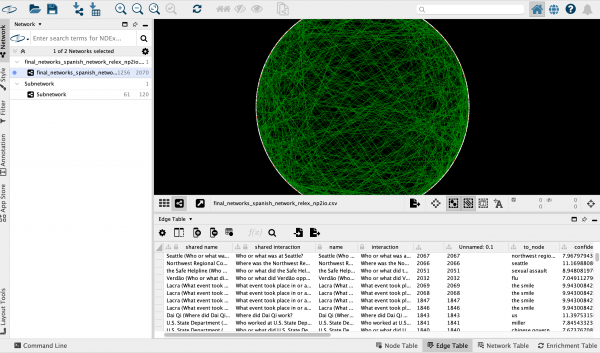Tensions have been rising over the last few weeks in Peru with reports of threats, harassment claims and physical attacks against journalists, culminating in the recent bombing of the home of news site director Yofre López Sifuentes. (Version
In the first four months of 2014, the National Association of Journalists of Peru (ANP) registered at least 47 separate attacks – including, threats, judicial persecutions and physical assaults – against members of the press. Last year alone, 129 cases were reported, according to ANP.
The attack against López Sifuentes, 39, took place on April 22 in the small coastal town of Barranca, located about 190 km north of the country’s capital of Lima. The dynamite attack damaged the journalist’s home and wounded his mother, Matilde Elizabeth Sifuentes, and his stepfather, Carlos Luis Huertas.
López Sifuentes, director of the news site Barranca.pe, recently had published reports of alleged corruption by the mayor of the Barranca province. He previously had also exposed pollution caused by regional sugar producer Agro Industrial Paramonga, S.A. (AIPSA).
Following the coverage, AIPSA filed criminal defamation charges against López Sifuentes in 2012. The charges, which could have resulted in up to three years in jail and a fine of almost €65,000, were later dismissed by a judge after the veracity of López Sifuentes’ articles was demonstrated in court. Proof for the allegation in López Sifuentes’ article was provided in large part by a report from Peru’s Health Ministry, which stated that the pollution, affecting local residents in the Paramonga district, was coming from a particular AIPSA factory.
This week, López Sifuentes spoke to IPI and explained the difficulties journalists, especially those living and reporting from provinces outside of the capital, have to deal with on a daily basis.
“We have reached the point where the state considers [journalists] the enemy, and as a result, they have left us abandoned,” López Sifuentes told IPI. “The authorities have left us vulnerable as we are victims of judicial harassment and bribes [by both state officials and factory owners alike] and when they realise these [threats] do not work on many of us, they try to silence us with bombs.”
The provinces, he explained, are completely neglected when it comes to investigative resources.
After the attack, local authorities ordered a police patrol to drive by his residence every couple of hours in order to ensure his safety. Nevertheless, López Sifuentes told IPI, he has not seen the patrol in the last few days.
“The inertia from public authorities, who up to this date do not have any indication as to who is responsible for hurting my parents, is incredibly outrageous,” he said.
Fearing for his life and that of his family, the reporter wrote a letter to Peru’s Minister of Interior, Walter Albán, requesting permanent security for himself and his relatives.
The letter, a copy of which was provided to IPI, bears a stamp verifying that the Ministry of Interior received it on May 6. López Sifuentes said he hopes to hear from national authorities regarding his request in the next couple of weeks. However, he told IPI that there is no protection mechanism to ensure the safety of journalists in the country. In the meantime, López Sifuentes continues to work from his home, investigating and writing about issues he believes to be in the public interest.
Another worrisome development in Peru is the recent case of photojournalist Rudy Huallpa Cayo, 26, who lost vision of his left eye on April 1 after reportedly being shot in the face at close range with a pellet gun by a police captain in the south-eastern city of Puno, near Lake Titicaca, while attempting to cover a local protest.
ANP General Secretary Zuliana Lainez told IPI that the police captain in question, Eliu Martin Fuentes Ramos, has a history of violence against members of the press. Ramos reportedly was removed from his former post in the southern city of Arequipa, located about 300 km west of Puno, after he allegedly physically and verbally attacked another journalist, Filomeno Manuel Quispe Flores, on May 3, 2009.
An investigation into the incident involving Huallpa Cayo remains open. In the meantime, Fuentes Ramos has retained his position as police captain in Puno, Lainez said.
Groups of journalists around the country have been marching and trying to raise funds to assist Huallpa Cayo in paying for an additional medical procedure. ANP has been providing the photojournalist with lodging and food assistance while he stays in the capital to receive further examinations by eye specialists. Doctors have advised Huallpa Cayo that he will not be able to go back to work for at least three to five months after the procedure.
IPI called on Peru’s President Ollanta Humala to take the necessary steps to ensure that press freedom is respected in his country.
“We ask the president to denounce these acts of violence against members of the press, which allegedly were carried out in some cases by local authorities and other actors,” IPI Press Freedom Adviser for Latin America and the Caribbean Vanessa I. Garnica said. “At the same time, we ask the Peruvian Government to allocate the necessary resources to swiftly investigate any threats or attacks that have taken place against journalists, especially those living and working in the provinces outside the metropolitan area, which have been reported as the most vulnerable.”



